
04-02-2014 21:22
 Christian Lechat
Christian Lechat
Dear friends,I would need the following document:

03-02-2014 19:46
 Chris Yeates
Chris Yeates
Bonsoir tousthis recent thread: http://www.ascofra

04-02-2014 15:24
 Karl Keck
Karl Keck
Hello everybody, These black cushions I've found i

03-02-2014 11:43
Gina RackleyHello, I don’t know if I’m getting this cor

03-02-2014 09:08
 Joop van der Lee
Joop van der Lee
Found on horse dung.Examining an unknown asco I fo

02-02-2014 20:12
 Björn Wergen
Björn Wergen
Hi friends,I have some Corylus twigs here with a d
Hyphomycète ???
Yannick Mourgues,
01-02-2014 23:03
 Cette chose étrange trouvée sur Rosa.
Cette chose étrange trouvée sur Rosa.Cela ressemble à un primordium de clavaire, mais ce cône blanchâtre est en fait hérissé de "pointes" au bout desquelles se trouvent des conidiospores septées hyalines.
Le tout prend naissance dans un "périthèce" immergé dans le bois (en coupe sur le cliché)
Voir photos.
Déjà vu un truc pareil ?
Yannick
Hans-Otto Baral,
02-02-2014 08:53

Re : Hyphomycète ???
Hi Yannick
this is Isaria friesii, and we had it quite recently here:
http://www.ascofrance.fr/search_forum/26541
Great is your observation that it arises from perithecia! I was unaware of this although I have images of quite a number of collections. So I need to investigate my material on this peculiarity, perhaps the fungus is specific to certain pyrenos rather than vascular plants.
Is there any chance to identify the pyrenomycete?
This is one of my projects for the future, therefore I would be glad if you could send me the collection data to this.
Thanks
Zotto
this is Isaria friesii, and we had it quite recently here:
http://www.ascofrance.fr/search_forum/26541
Great is your observation that it arises from perithecia! I was unaware of this although I have images of quite a number of collections. So I need to investigate my material on this peculiarity, perhaps the fungus is specific to certain pyrenos rather than vascular plants.
Is there any chance to identify the pyrenomycete?
This is one of my projects for the future, therefore I would be glad if you could send me the collection data to this.
Thanks
Zotto
Yannick Mourgues,
04-02-2014 18:27

Re : Hyphomycète ???
Hi Zotto !
Thank's a lot ! This Isaria is arising from an unknown and definitivly undeterminable pyrenomycete (full of something like a mycelium). All my collection is like that.
Collection data :
Saint Germain du Teil (48340) - France - 01/02/2014 - Alt.: 800m - On Rosa dead twigs, on the ground on the side of a path.
Do you need GPS point ?
Amitiés.
Yannick
Thank's a lot ! This Isaria is arising from an unknown and definitivly undeterminable pyrenomycete (full of something like a mycelium). All my collection is like that.
Collection data :
Saint Germain du Teil (48340) - France - 01/02/2014 - Alt.: 800m - On Rosa dead twigs, on the ground on the side of a path.
Do you need GPS point ?
Amitiés.
Yannick
Christian Lechat,
04-02-2014 19:22

Re : Hyphomycète ???
Hi to all,
Isaria is a parasitic Hypocreales. I would be surprised that Isaria is an anamorph of Disco.
Regards,
Christian
Isaria is a parasitic Hypocreales. I would be surprised that Isaria is an anamorph of Disco.
Regards,
Christian
Hans-Otto Baral,
04-02-2014 22:45

Re : Hyphomycète ???
Yes, I know. These anamorph genera are often heterogenous. Anguillospora for instance is orbiliaceous, but the type belongs to Massarina and has another type of conidial development (rhexolytic = with separating cell that splits during secession) than the others which are schizolytic (separating at the septum). Even the latter belong also in Dothideomycetes and Leotiomycetes.
Numerous such examples exist.
I did not yet have time to search in the literature for reports of Isaria friesii. I hope there are some besides Montagne 1836!
Brian Spooner identified the fungus, and he wrote to me in 2011: "It seems to be what has been called Isaria friesii, erumpent clusters of whitish synnemata, on dead attached dry twigs of various things, including Hedera, Buddleia, Symphoricarpos etc. Just a few collections recently which I referred to this old name but didn't follow up further (and now await the new key to synnematous genera from Keith Seifert)".
I am not aware of whether this key appeared anew.
Zotto
Numerous such examples exist.
I did not yet have time to search in the literature for reports of Isaria friesii. I hope there are some besides Montagne 1836!
Brian Spooner identified the fungus, and he wrote to me in 2011: "It seems to be what has been called Isaria friesii, erumpent clusters of whitish synnemata, on dead attached dry twigs of various things, including Hedera, Buddleia, Symphoricarpos etc. Just a few collections recently which I referred to this old name but didn't follow up further (and now await the new key to synnematous genera from Keith Seifert)".
I am not aware of whether this key appeared anew.
Zotto
Walter Gams,
04-02-2014 23:07
Re : Hyphomycète ???
This key is published in "Genera of Hyphomycetes" in 2011
Hans-Otto Baral,
04-02-2014 23:23

Re : Hyphomycète ???
Dear Walter
thanks for the hint. We arrived at Arthrobotrys stilboidea, but that name does not exist. I assume the writer meant
Arthrobotrys stilbacea J.A. Mey., Bull. trimest. Soc. mycol. Fr. 74(3): 246 (1958)
and not Arthrobotryum stilboideum which has brown, up to 3-septate conidia.
If anybody has access to this literatue we would be happy.
Zotto & Evi
thanks for the hint. We arrived at Arthrobotrys stilboidea, but that name does not exist. I assume the writer meant
Arthrobotrys stilbacea J.A. Mey., Bull. trimest. Soc. mycol. Fr. 74(3): 246 (1958)
and not Arthrobotryum stilboideum which has brown, up to 3-septate conidia.
If anybody has access to this literatue we would be happy.
Zotto & Evi
Hans-Otto Baral,
04-02-2014 23:57
Jean-Pierre VIDONNE,
05-02-2014 00:23
Re : Hyphomycète ???
Hi Zotto
Attached is J.A. Meyer 1958
Good night to all
jean-Pierre
Attached is J.A. Meyer 1958
Good night to all
jean-Pierre
Hans-Otto Baral,
05-02-2014 00:32

Re : Hyphomycète ???
Many thanks Jean-Pierre!
From Belgish Congo, probably not our fungus :-(
though not much different
good night
From Belgish Congo, probably not our fungus :-(
though not much different
good night

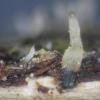
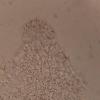
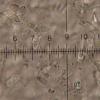
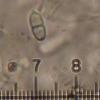
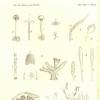
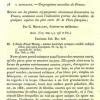
 Meyer19580001-0001.pdf
Meyer19580001-0001.pdf